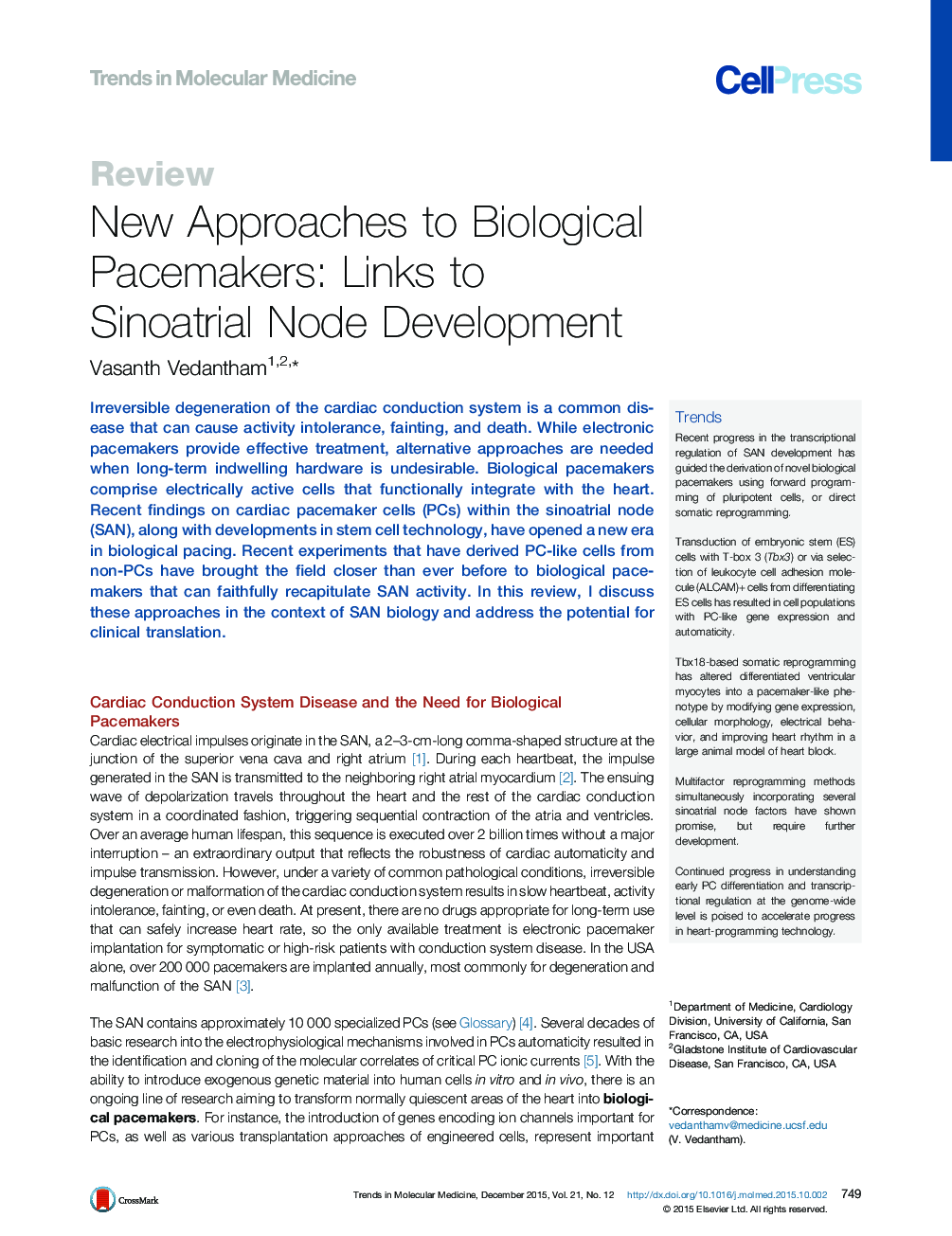| Article ID | Journal | Published Year | Pages | File Type |
|---|---|---|---|---|
| 2838325 | Trends in Molecular Medicine | 2015 | 13 Pages |
Irreversible degeneration of the cardiac conduction system is a common disease that can cause activity intolerance, fainting, and death. While electronic pacemakers provide effective treatment, alternative approaches are needed when long-term indwelling hardware is undesirable. Biological pacemakers comprise electrically active cells that functionally integrate with the heart. Recent findings on cardiac pacemaker cells (PCs) within the sinoatrial node (SAN), along with developments in stem cell technology, have opened a new era in biological pacing. Recent experiments that have derived PC-like cells from non-PCs have brought the field closer than ever before to biological pacemakers that can faithfully recapitulate SAN activity. In this review, I discuss these approaches in the context of SAN biology and address the potential for clinical translation.
TrendsRecent progress in the transcriptional regulation of SAN development has guided the derivation of novel biological pacemakers using forward programming of pluripotent cells, or direct somatic reprogramming.Transduction of embryonic stem (ES) cells with T-box 3 (Tbx3) or via selection of leukocyte cell adhesion molecule (ALCAM)+ cells from differentiating ES cells has resulted in cell populations with PC-like gene expression and automaticity.Tbx18-based somatic reprogramming has altered differentiated ventricular myocytes into a pacemaker-like phenotype by modifying gene expression, cellular morphology, electrical behavior, and improving heart rhythm in a large animal model of heart block.Multifactor reprogramming methods simultaneously incorporating several sinoatrial node factors have shown promise, but require further development.Continued progress in understanding early PC differentiation and transcriptional regulation at the genome-wide level is poised to accelerate progress in heart-programming technology.
